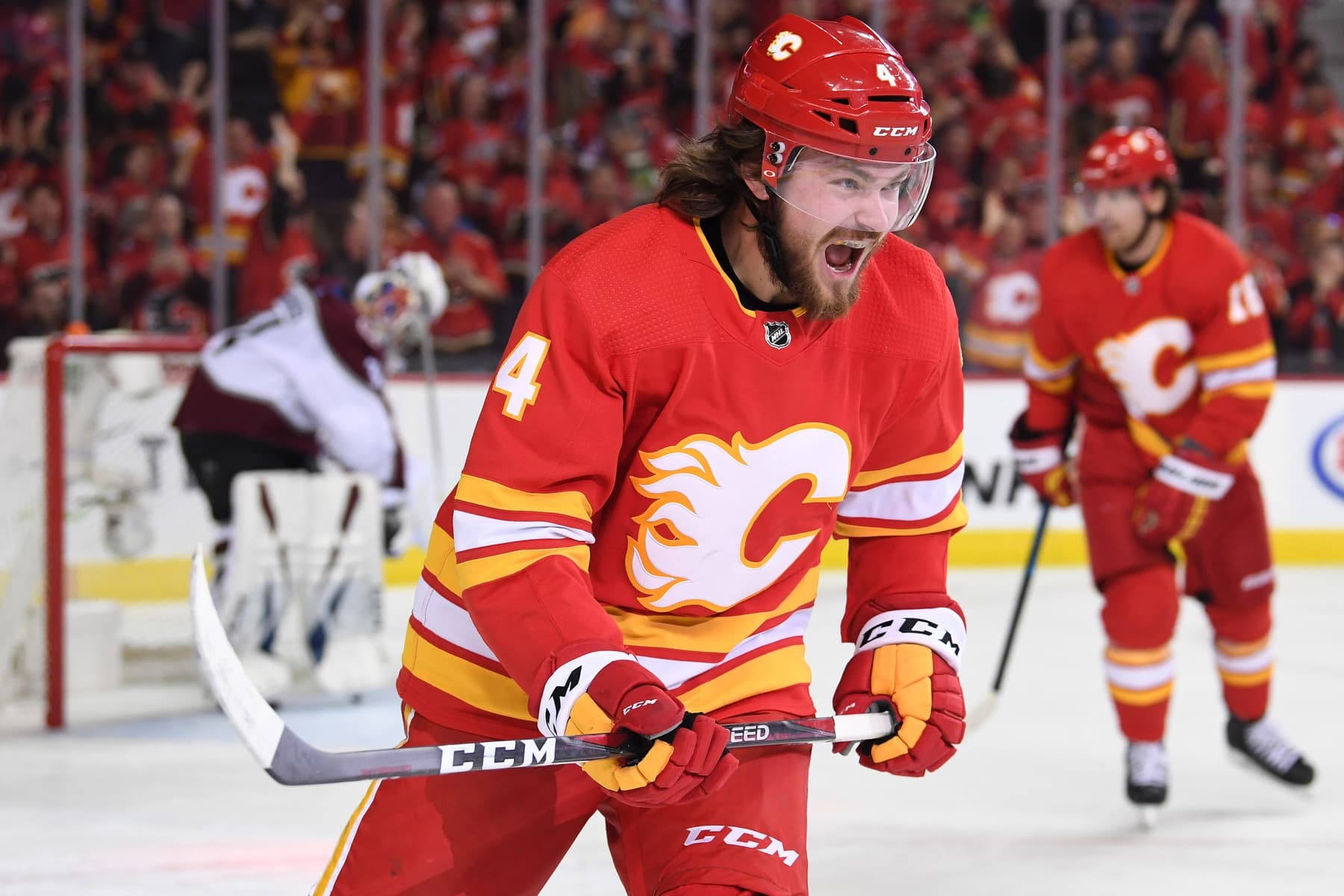FlamesNation player evaluation: Rasmus Andersson

By Ryan Pike
4 years agoA couple seasons ago, Rasmus Andersson’s fitness level was criticized by Calgary Flames general manager Brad Treliving. A season ago, Andersson seemed too good for the American Hockey League. This season, he was arguably the team’s most pleasant surprise as he made a major impact on the Flames’ blueline group.
2018-19 season summary
For a player that began the season in the minors, it’s a bit crazy that a case can be made that Andersson was the second-best Flames defenseman behind Mark Giordano. Blessed with an accurate shot from the point, strong hockey sense and more poise than you’d expect from somebody playing just their third year of professional hockey, Andersson was one of the most consistent Flames players during the 2018-19 season.
| Games played | Goals | Assists | Points | TOI/GP | 5v5 CF% | 5v5 CF% rel | OZS% | PDO |
| 79 | 2 | 17 | 19 | 16:02 | 50.84 | -3.91 | 57.86 | 1.026 |
Andersson was sent to the farm by the Flames on Oct. 2, the last defenseman cut by the team at the end of training camp. The very next day, Travis Hamonic broke his jaw fighting Erik Gudbranson four minutes and 22 seconds into the first game of the regular season. The Flames summoned Andersson from Stockton on Oct. 5, and he stayed for the rest of the regular season – he was good enough when he got a chance to play that there was no way he was going anywhere.
The Swedish defender was used in three different situations:
- In a sheltered role on the third pairing with either Oliver Kylington or Juuso Valimaki. This situation saw the third pairing get hefty amounts of offensive zone starts and frequent deployments with Johnny Gaudreau, Sean Monahan and Elias Lindholm. They were put in a position to generate offense and while their numbers were gaudy, they were effective in that role.
- In a make-shift second pairing with Noah Hanifin. This situation was always a mid-game adjustment, usually in response to occasional rough nights for Hanifin and Travis Hamonic’s pairing. Andersson and Hamonic were often swapped mid-game so the Flames could get a different energy going.
- Late in the second, Andersson was moved up to play with Mark Giordano on the first pairing. This situation saw Andersson used like Giordano: tough deployments and match-ups often against the other team’s best players, usually with Mikael Backlund’s line on the ice with them.
Andersson did a great job earning the trust of the coaching staff during the season, and kept building his game to the point where he never looked out of place playing with Giordano late in the season. A decent proxy for measuring the level to which the coaching staff trusted Andersson could be his use with the Flames’ goaltender pulled. He played 28:46 with the net empty, behind only Giordano in terms of defensemen. He was relied upon for his shot and he led the team in shot attempts in that situation. He was third among all Flames defensemen in five-on-five shots on goal, and that’s with him playing considerably less than other defenders and the coaching staff noting to the media that they didn’t think he used his shot enough.
Failed to load video.
In terms of rates – evening out ice time – Andersson was the worst of the Flames’ regular defensemen at offense generation – his shot attempts, shots, scoring chances and high-danger chances for rate weren’t amazing. But he ranked between first and third on the team’s blueline group in the defensive rates: the suppression of shots attempts, shots, scoring chances and high-danger chances. Some of his defensive metrics have to be taken with a grain of salt given he spent roughly two-thirds of his season playing on the third pairing against the other team’s bottom six, but you can see why Peters would think Andersson could hack it with Giordano down the stretch.
Compared to last season
Andersson’s 2017-18 saw him yo-yo between the Flames and Stockton three times. As with this past season, he was the last defenseman cut from training camp, but he stayed in Stockton until early November and only ended up playing 10 NHL games. His entire season on the farm was an extended argument that he had outgrown the minor leagues: he had nine goals and 39 points in 56 AHL games. He was eighth in the AHL in defensive scoring and that was despite playing between seven and 20 fewer games than the seven players ahead of him. On a per-game basis, only a handful of AHL defensemen had the offensive numbers or the shot generation rates that he did.
In other words: he was a very good minor league defender as a 21-year-old and every indicator suggested that he would become a pretty good NHLer. Lo and behold, things seem to keep trending in that direction.
What about next season?
The 2019-20 season will be the final season of Andersson’s entry level deal. He’s carrying a minuscule $755,833 cap hit next season – league minimum is $700,000 – so he could be one of the league’s best bargains. Barring other moves, he’ll likely begin the season on the third pairing. That said, between his strong play in 2018-19 and head coach Bill Peters’ growing preference for shot-balancing defensive pairings, there’s a considerable chance he could play significant time with Giordano on the top pairing. His underlying numbers, particularly his shot suppression metrics, suggest he’s worthy of an expanded role going forward.
Recent articles from Ryan Pike





